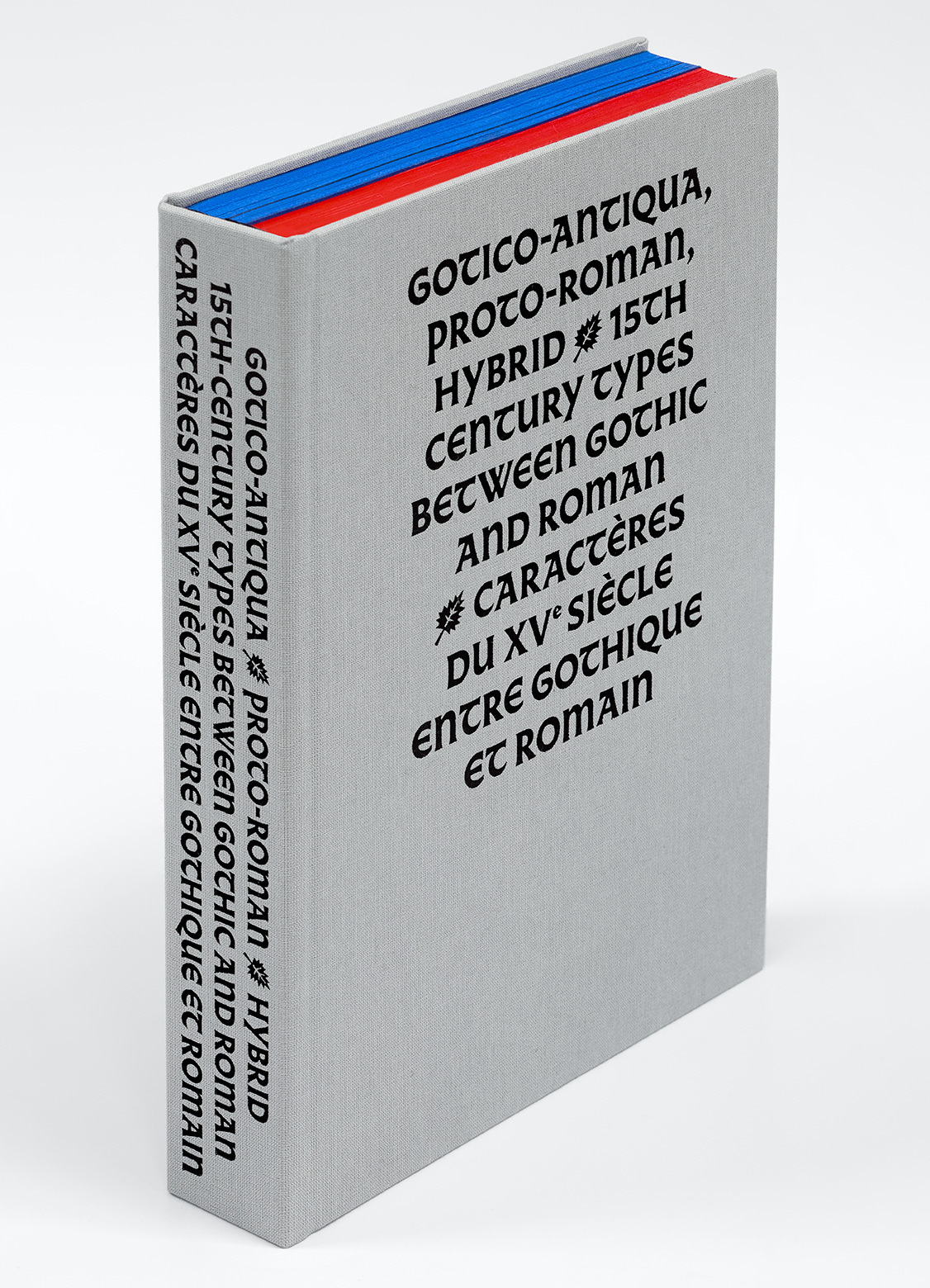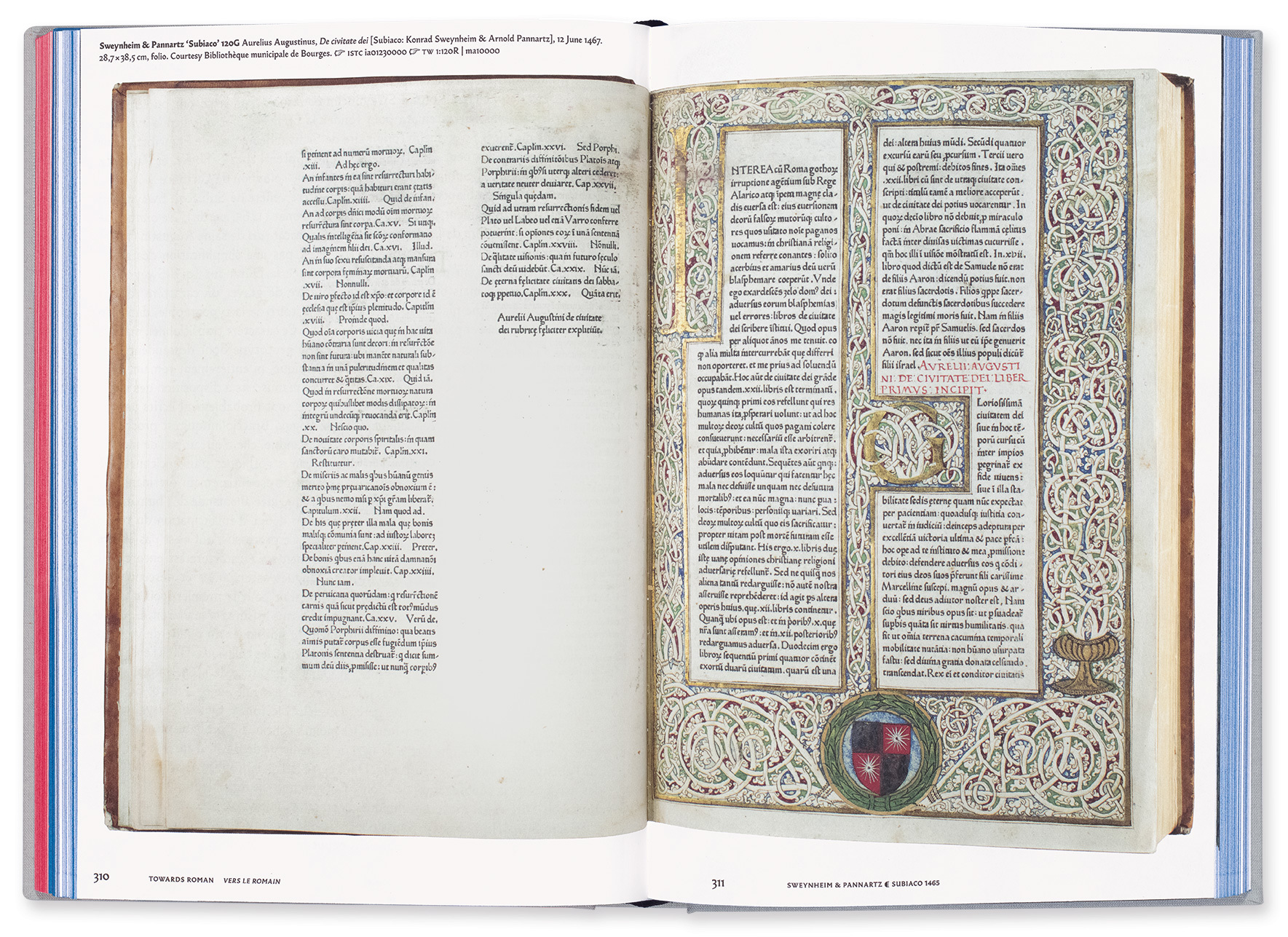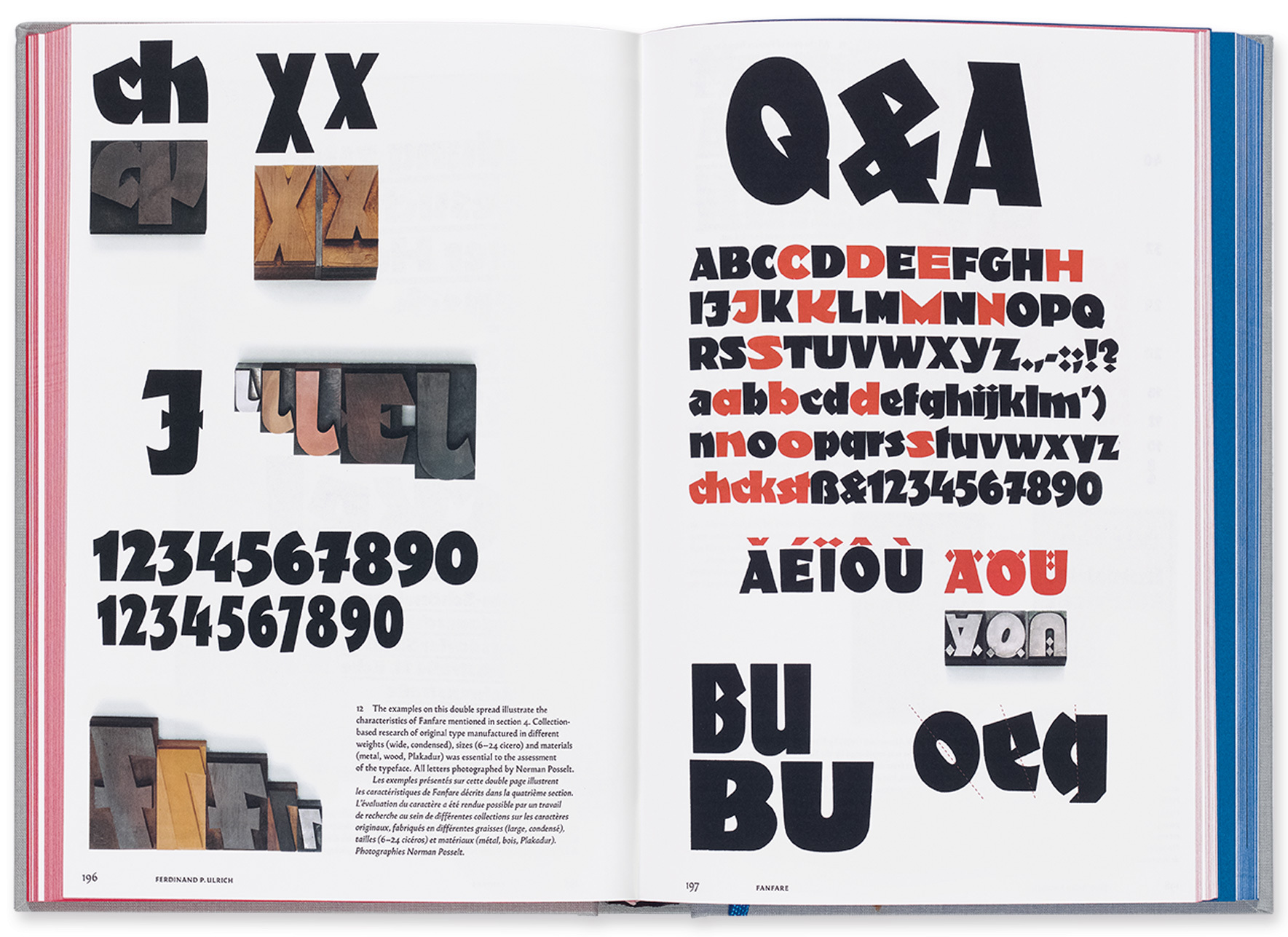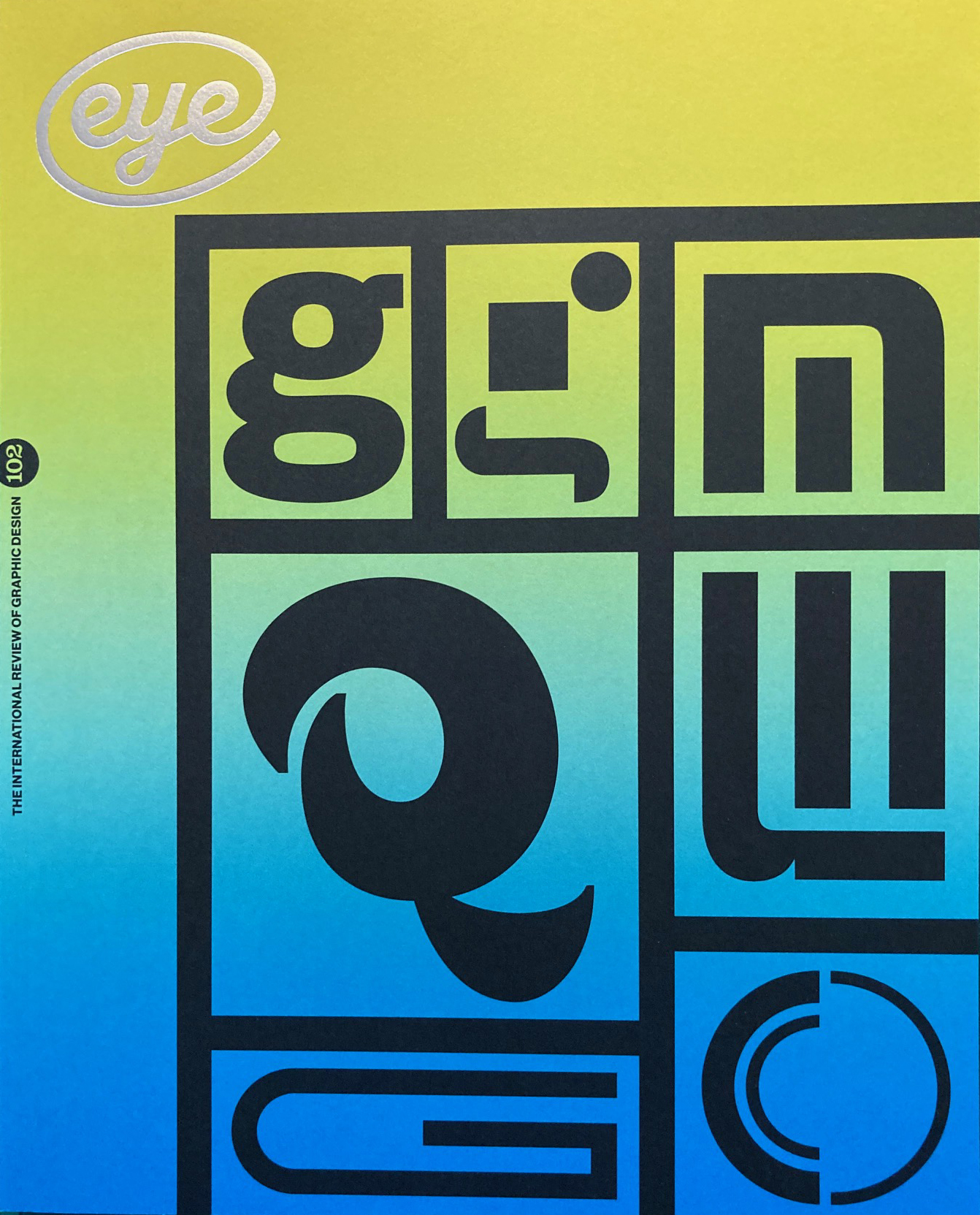Autumn 2021
From gothic to roman, almost
Jérôme Knebusch
Thomas Huot-Marchand
Konrad Sweynheim
Arnold Pannartz
Akira Kobayashi
Reviews
Typography
Gotico-Antiqua, Proto-Roman, Hybrid: 15th century types between gothic and roman
Edited and designed by Jérôme Knebusch. Introductions by Christelle Kirchstetter and Thomas Huot-Marchand. Co-publication Poem, Frankfurt and Atelier National de Recherche Typographique [ANRT], Nancy, €48.
Most books on the history of type design follow a familiar trajectory. They either provide a chronological overview, mostly concentrating on the classic punchcutters and well known printers, or they zoom in on one maker or group and combine letterform development with biographical information.
Gotico-Antiqua, Proto-Roman, Hybrid, with all texts presented both in English and French, is a type history book with a fresh approach. Its subject is the late fifteenth century, when scribes gave way to the rapid spread of printing with movable type; the focus is on the type cutting experiments that led to the transition from Gutenberg’s imitation of handwritten broken scripts (aka fraktur or gothic) into what we now call roman. In spite of its subtitle, 15th century types between gothic and roman, quite a bit of attention goes to echoes of that stylistic jump in later times.
This densely set book is edited and designed by Jérôme Knebusch, the publisher behind the Poem series of typographic booklets, who with Kirchstetter and Huot-Marchand (see Reputations: Thomas Huot-Marchand in Eye 102), works at Ensad and ANRT (Atelier National de Recherche Typographique) in Nancy, France. It is a complete report of two events that took place there in April 2019. On the one hand: a symposium on the hybrid letterforms that resulted from the transition from gothic to roman in the first post-Gutenberg decades. On the other: a monumental exhibition on the same subject. I attended both and was fascinated, not only by the views expressed on the early attempts at roman punchcutting, but also by the detailed opinions on hybrid letterforms and typefaces in the nineteenth and twentieth centuries.
The double event was the culmination of an ambitious international project initiated by Knebusch, which involved more than 150 students at eleven institutions in France, Germany and Italy. They explored the historic development from gothic to roman, and some digitised hybrid text faces, which represented those investigations.
Spread from Gotico-Antiqua, Proto-Roman, Hybrid. Pages from a 1467 book designed and produced by Konrad Sweynheim and Arnold Pannartz, the printers and punchcutters who introduced letterpress printing to Italy and were the first to propose a post-gothic typeface – Subiaco.

Key typefaces from the transition phase are those by Konrad Sweynheim and Arnold Pannartz, printers from Mainz and possibly Prague, respectively, who introduced the movable type printing press to Italy and made several attempts at creating the first roman types that were compatible with humanist writing in Italy.
One chapter describes and shows details of Subiaco, a Sweynheim / Pannartz revival that is closer to the original than Akira Kobayashi’s much praised Conrad (2000).
Nearly every chapter of Part 2 is a translation of a room in the exhibition. One fascinating graphic is a series of simplified maps of central Europe and Italy; each spread shows the extension of the letterpress culture over just one year. It visualises its acceleration in the clearest, most compelling way I have seen.
The design of the book is unorthodox and dense. It consists of a red conference half and a blue exhibition half, the latter written entirely by curator Knebusch. It convincingly places the historic research in today’s type world. It is fascinating to see Knebusch’s own typeface family Almost (Almost Roman and Almost Gothic), based on hybrid designs from the early period, though its smaller sizes may be a challenge to older readers.
Fanfare, an expressionist blackletter grotesk designed by Louis Oppenheim in 1927, discussed in an essay by Ferdinand P. Ulrich.

Gotico-Antiqua, Proto-Roman, Hybrid is a book for an elite of type lovers and specialists, but then again, as we have seen from the dedication of so many students, practically anyone interested can join the club.
Jan Middendorp, designer, writer and author of Dutch Type, Berlin
First published in Eye no. 102 vol. 26, 2021
Eye is the world’s most beautiful and collectable graphic design journal, published for professional designers, students and anyone interested in critical, informed writing about graphic design and visual culture. It is available from all good design bookshops and online at the Eye shop, where you can buy subscriptions and single issues.

